Letting the Spline go is going to be a wrench. The bike has transported me up hill, down dale, over, under (and, on a couple of memorable occasions, through) some key landmarks of mountain biking in the UK, and it’s never disappointed.
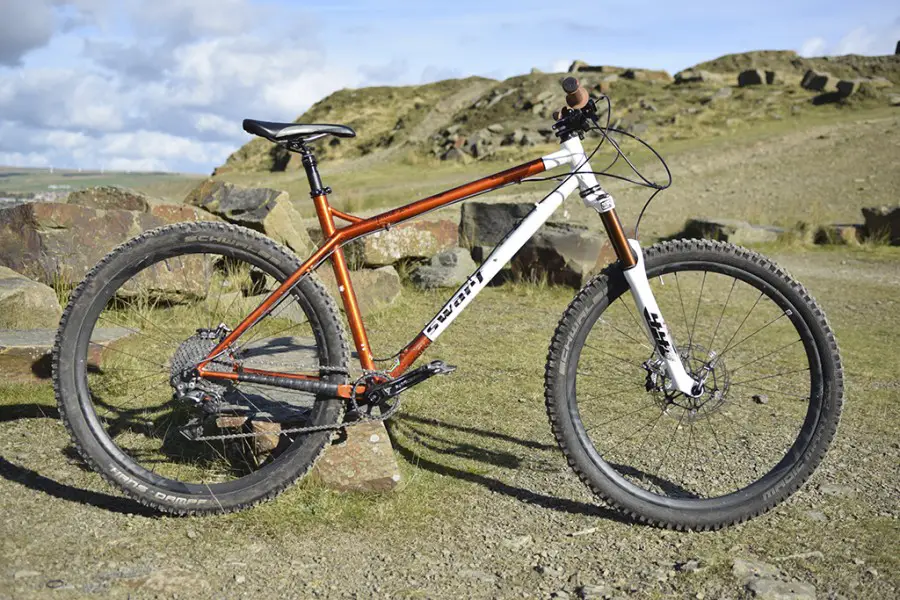
With a 120mm fork, the bike runs a slack 67.5° head angle and a steep 75° seat angle. With a 120mm fork. One of the changes I made during my time on the bike is to install a longer, 140mm fork on there – the Marzocchi 44 Micro Switch TA has proved to be an excellent match to the frame (and not just in colour). It kicks back the head angle even more and raises the BB everso slightly. Ragley’s excellent 40mm Stubbing stem attaches a pair of wide Joystick Analog 800mm carbon bars to the front end, and a Specialized Command Post keeps a Joystick Digital Feather saddle aloft. Brakes are now Hope’s excellent Stealth Race Evo 4 numbers, which combine reasonably light weight with scads and scads of stopping power.
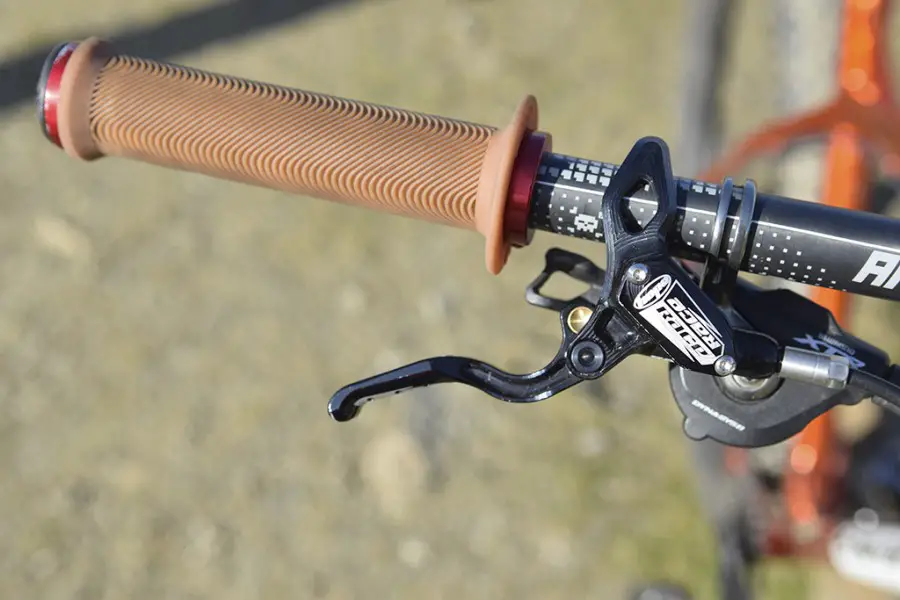
The XTR drivetrain I was originally running has been altered somewhat. I’ve kept the 11 speed cassette (which is now more or less creak-free) and the right-hand shifter, and I’ve ditched the front mech and chainset for a RaceFace Turbine Cinch number. Full on one-by.
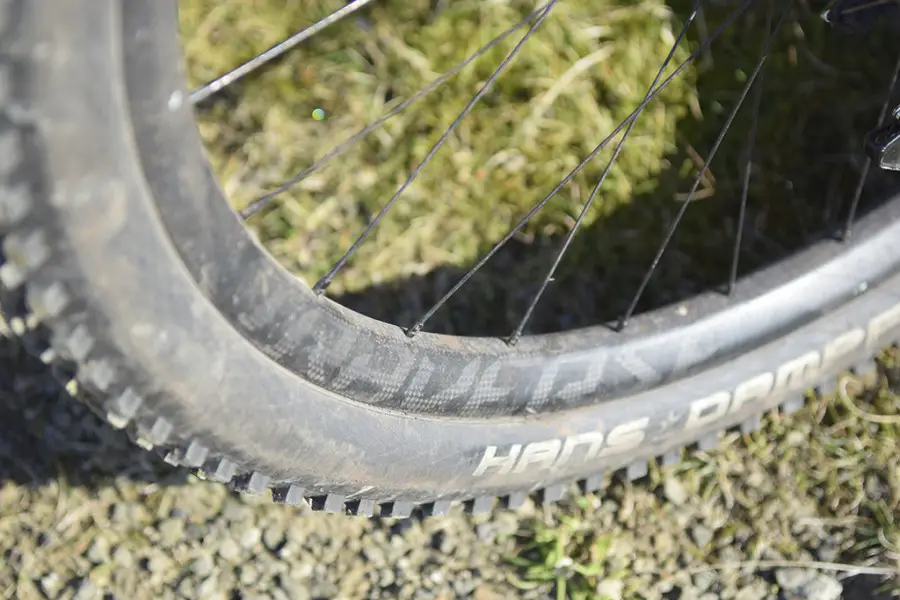
And lastly, the wheels are now Specialized Roval carbon jobs, with a 30mm internal width, shod with Schwalbe’s Hans Dampf and Magic Mary tyres. Light (ish) and enormously burly.
First up, switching to 1x hasn’t been the wrench that perhaps some were predicting. Sure, I’ve lost a couple of gears at the top end, but to be honest it’s just as easy to stand up and muscle up things than it is to sit and spin – at least for the things this bike excels at. And – I’ll admit it’s entirely my fault, with the fork and the top tube length – this bike is a sit-and-spinner rather than a fleet-of-foot mountain goat. That’s not to say it’s a bad climber; far from it, as long as you keep on top of that too-long-for-the-frame fork, but it likes to take its time. Fair enough; so do I.
And the benefits outweigh the downsides. Massively. You have to be absolutely on your toes to ride this thing to its full potential – a potential that in my opinion the fork and the wheels now allow it to reach. But goodness me, you have to be on your toes. I was trying to think of an appropriate analogy for this bike, and eventually I decided on this one – this bike is like riding a lion. If you simply sit up and let it take you where it wants to, it’ll spit you off, and turn on you. The back end will beat you up, and the front end will steer you into inadvisably pointy things. But if you show it who’s boss, it is immensely capable. It’ll take down zebra. Hell, it’ll leap over buildings…

Push into corners, use that huge cockpit; those wide bars, and this bike will over ride anything. Big stepdowns, rock gardens, air-time – whatever. They’re no problem. Working the front end so hard also gives you a break from the rigidity of the back end – the whole bike starts to make a whole lot of sense. The very-short stem, the wide bars, both speed up the handling that the long fork and slack head angle were working to take away.
The burly-as-anything tyres, on those wide rims, also gave an element of comfort to go with the immense grip on offer; the relative verticality of the sidewall emphasised the corner knobs and increased traction when leaned over.
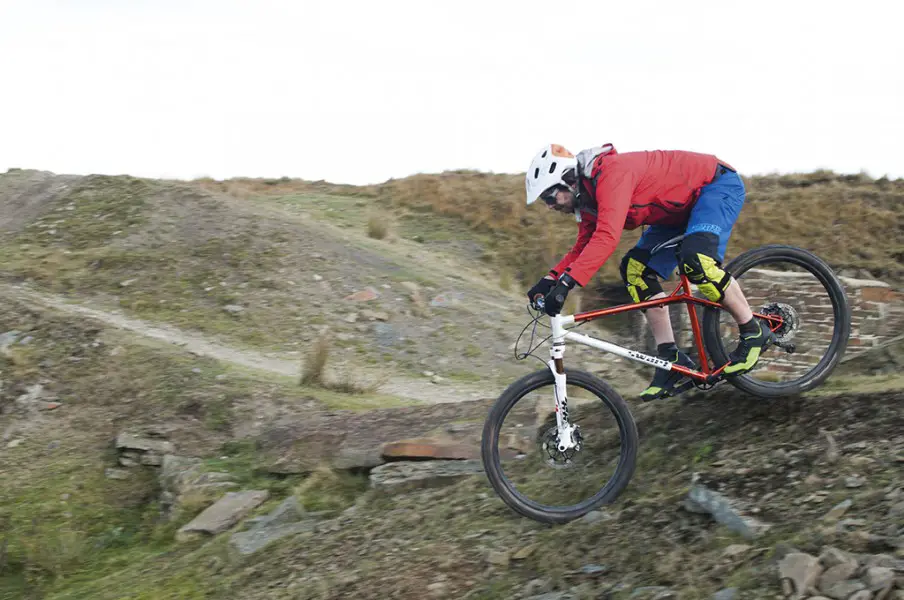
For the photoshoot, we took a load of bikes up to Lee Quarry in Bacup, so I had the opportunity to ride several bikes one straight after the other. It was fascinating to compare ta variety of different bikes. And amusingly, the Spline was the burliest – even in comparison to 150mm full-suspension bikes. The long wheelbase means you have to muscle it around things a little more when it gets twisty, but it’s not nearly as incapable as you might think – you just need to figure out how to work it. Which lines will flatter it. And just how very, very fast you want it to go.
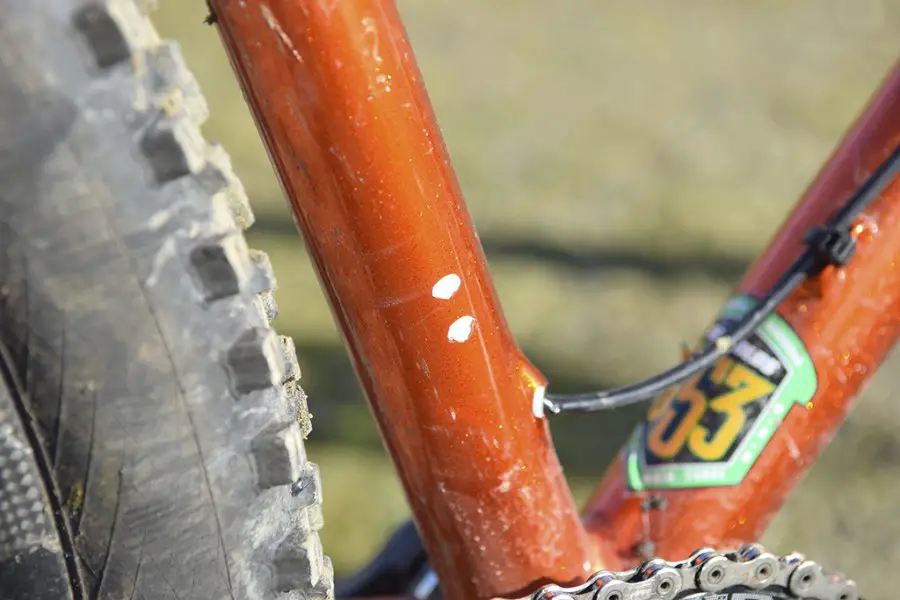
Downsides? Not many. The extremely swish, pricey custom paintwork hasn’t fared quite as well in Yorkshire as I’d perhaps have hoped. The white seems to have fared pretty well, but the orange is reflecting the very rocky nature of the trails a little more extensively than I’d hope, and has disappointingly begun to flake in places. It’s always gutting when paint goes, but it’s even more of a wrench on a bike as lovely as this. It’s nothing that a little judicious appropriately coloured nail-varnish wouldn’t sort, but if this was my bike I think I’d have gone for a single colour, or perhaps a powdercoat for maximum strength, at the expense of the (admittedly fabulous) looks.
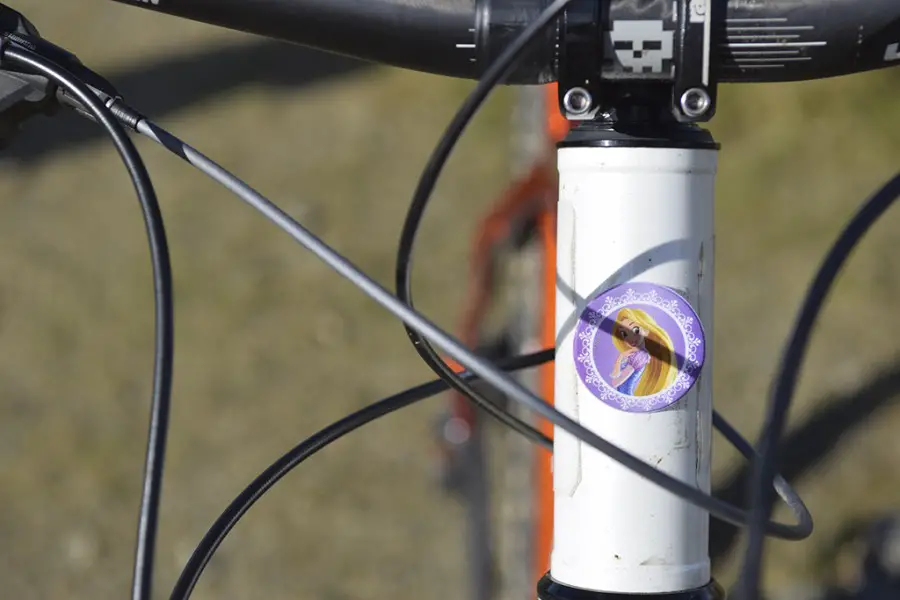
The gorgeous Guilloche head badge came detached just before the photoshoot, too – so I removed it to prevent loss, and my three year old daughter replaced it with something which probably critiques my riding style somewhat, but never mind. Adrian tells me that all the badges are now screwed in to prevent just this sort of thing…
It’s no understatement to say that I’ll be sad when this bike goes back. I’ll be gutted. It’s a shining example of what can be achieved with a hardtail, and how far it can push your riding. If you’re in the market for a new bike, and you think that only a full-suspension machine is man enough for the job, you need to try a Spline.
[“source-singletrackworld”]





